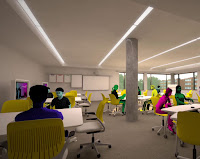The very nature of the course is driven by the students’ individual interests and personal career goals. Students get out of the course what they put in, and often find it to be a very practical course in terms of preparing them to make more informed decisions for their future.
During the Summer Institute, our goal was to create a fully developed online model of this course that could provide students with the ability to work more at their own pace and provide choice and extension wherever possible.
How is this working in the classroom? Exceptionally well!
Having taught this course for many years, I can say without a doubt that the solid planning we did for this course has been incredibly beneficial for me and my students. As we were able to dedicate time to thoroughly planning our modules, checking website links and refining tasks, students are able to work ahead or to complete work outside school when necessary, with very little instruction from me. This has allowed me to check in with students’ progress on tasks, to clarify concepts and to have meaningful conversations with individual students that help them apply their learning to their future goals.
As educators, we sometimes feel stress associated with planning lessons and delivering them effectively. As this planning has been done and the delivery is seamless, I can spend my energy on students’ individual needs, which makes for a more meaningful learning environment.



